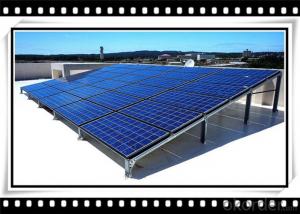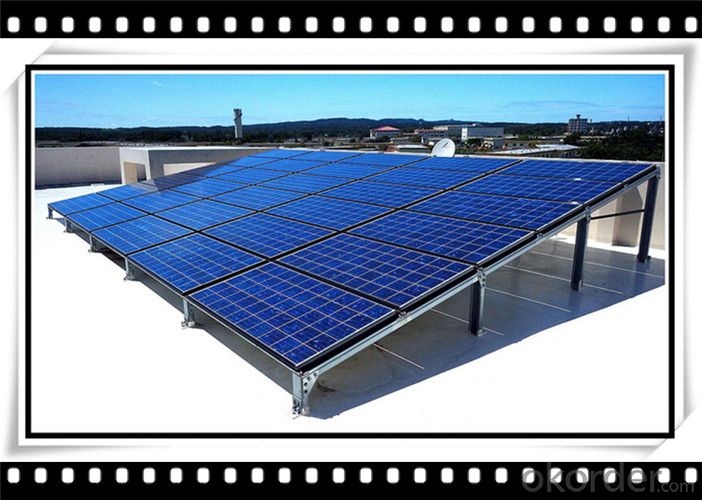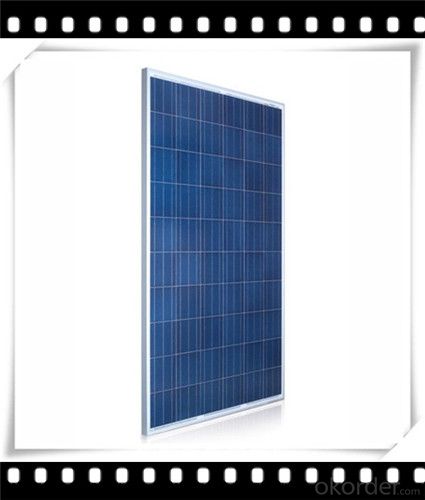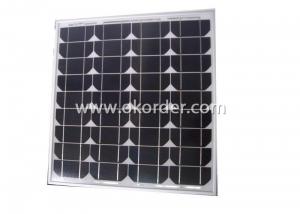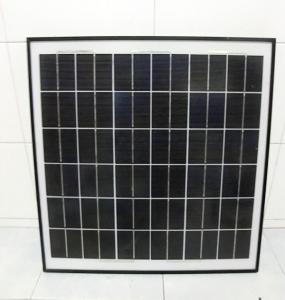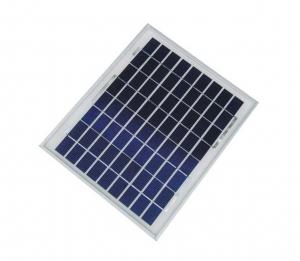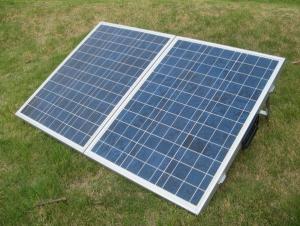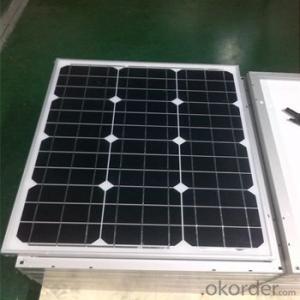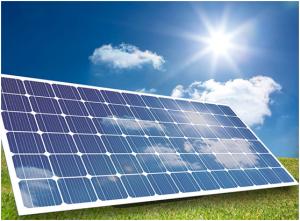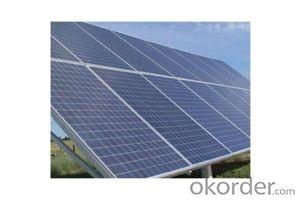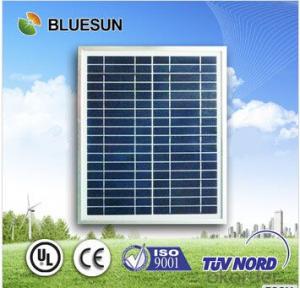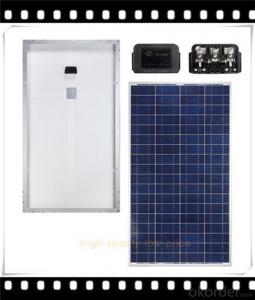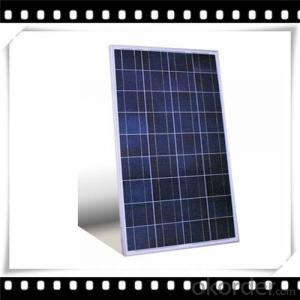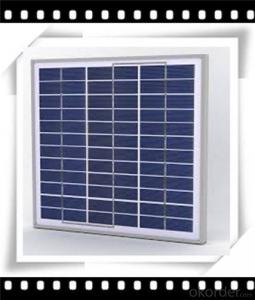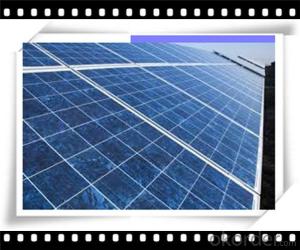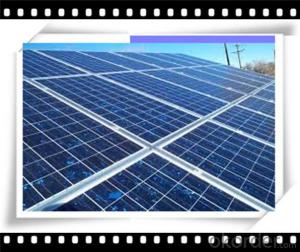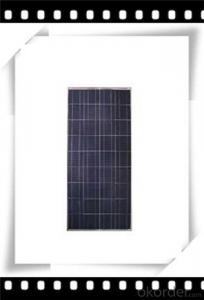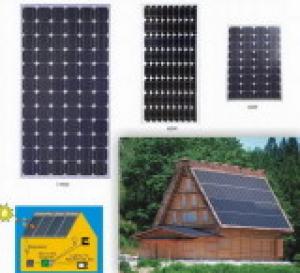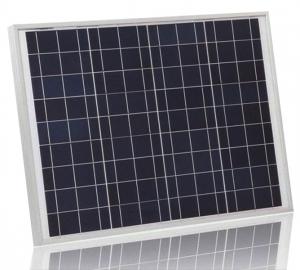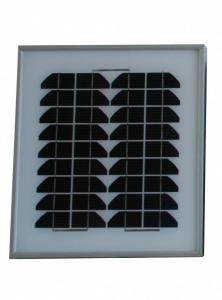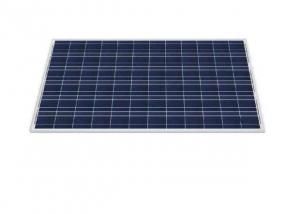FS22 Solar Panels - 1W Poly Mini Newest Solar Panel CNBM
- Loading Port:
- Qingdao
- Payment Terms:
- TT OR LC
- Min Order Qty:
- 10 set
- Supply Capability:
- 300000 set/month
OKorder Service Pledge
OKorder Financial Service
You Might Also Like
Polycrystalline Solar Modules
CNBM offers a range of small, medium and large polycrystalline solar modules, designed for a range of requirements.
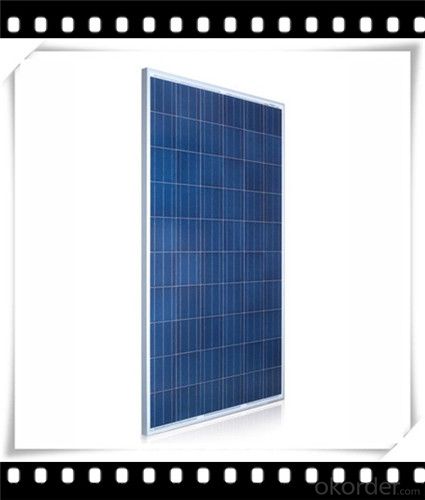
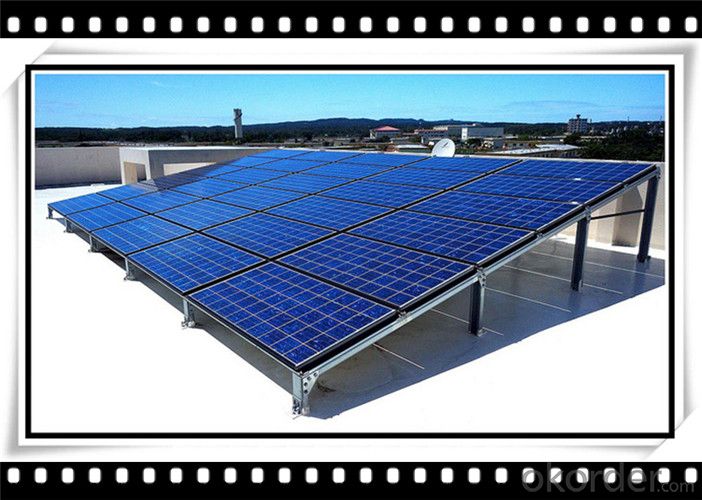
Specifications:
+/-3% |
Polycrystalline silicon solar cells (156 x 156mm) |
60 (10 x 6) |
1650 x 990 x 40 |
25.5 |
Limits:
Operating Temperature | -40~+85? |
Storage Temperature | -40~+85? |
Maximum System Voltage | 1000 VDC max. |
Hail Impact | Diameter of 28mm with impact speed |
Temperature and Coefficients:
NOCT | 48C+/-2? |
Voltage temperature coefficient (%/K) | -0.35 |
Current temperature coefficient (%/K) | 0.05 |
Power temperature coefficient (%/K) | -0.45 |
Characteristics:
Model: | SGM-200P | SGM-210P | SGM-220P |
Max-power voltage Vmp (V) | 29.2 | 29.4 | 29.41 |
Max-power current Imp (A) | 6.85 | 7.14 | 7.48 |
Open-circuit voltage Voc (V) | 36.5 | 36.69 | 36.9 |
Short-Circuit Current Isc (A) | 7.28 | 7.6 | 7.93 |
Max-power Pm(W) | 200 | 210 | 220 |
Model: | SGM-230P |
Max-power voltage Vmp (V) | 29.8 |
Max-power current Imp (A) | 7.72 |
Open-circuit voltage Voc (V) | 37.31 |
Short-Circuit Current Isc (A) | 8.19 |
Max-power Pm(W) | 230 |
STC: Irradiance 1000W/m2, module temperature 25?, AM-=1.5
Poly Crystalline Solar Panels Specifications Range
Maximum Power (Pm) | Dimension | Weight | Operating Voltage (Vmp) | Operating Current (Imp) | Open Circuit Voltage (Voc) | Short Circuit Current (Isc) |
0.45W | 140x80x10mm | 0.08kg | 3.3V | 150mA | 4.6V | 160mA |
1.0W | 162x140x10mm | 0.16kg | 7.5V | 150mA | 10.3V | 160mA |
4.5W | 269x251x23mm | 0.8kg | 16.5V | 0.27A | 20.5V | 0.3A |
10W | 420.1×268.9×22.6mm | 1.92kg | 17.5V | 0.58A | 20.5V | 0.6A |
20W | 425x502x50mm | 3.0kg | 16.8V | 1.19A | 21.0V | 1.29A |
30W | 593x502x22.6mm | 3.9kg | 16.8V | 1.78A | 21.0V | 1.94A |
40W | 655x537x50mm | 5.75kg | 17.3V | 2.31A | 22.1V | 2.54A |
50W | 839x537x50mm | 6.0kg | 17.5V | 2.9A | 21.8V | 3.17A |
65W | 1111x502x50mm | 7.2kg | 17.6V | 3.69A | 22.1V | 3.99A |
80W | 1204x537x50mm | 7.7kg | 17.6V | 4.55A | 22.1V | 4.8A |
- Q: I have 2 solar panels one is 5 watts 2 volts .2 amps or -The other is 50 watts 2 volts 2.6 amps or-Can I ...and what is the best way to hook them togeather to increase my amps being put back to my battery ?? I would be hooking them up to a 7 amp 00 watt charge controllerThe panels are rated 2 volt but the specs say they will produce more whennot connected to charge controllerPlease advise and should I even bother with the smaller panel ?
- The answer is that the two panels should be put in parallel. The voltage out will drop to the voltage of the lower panel, but you should get most of the power, if the panels aren't too badly mismatched. I would try to get a multimeter and try to measure the actual current coming out of the panels in full sun. Sometimes the specifications on these smaller panels are very optimistic. If the whole setup is putting out less than 2 amps, I'd say wire the whole thing straight to the battery - little chance of boiling the electrolyte at those currents.
- Q: How often do solar panels need to be replaced or repaired roughly? Is it costly to do so?
- This Site Might Help You. RE: How much maintenance do solar panels require? How often do solar panels need to be replaced or repaired roughly? Is it costly to do so?
- Q: I have several 6v 4.5a sealed lead acid batteries. I would like to hook one of them up to a solar panel and have it stay charged from the solar panel all the time, but not overcharged. Is there a simple way to do this with an IC or something? I am only a beginner with circuits so I want it to be something very easy to make. Basically, I want it to stay charged all the time so it's available if I need it for a power out or something.Thanks.
- What I would suggest is that you find a panel that is rated for 00 mA, at any voltage higher than 8 volts. A 2 or even 8-volt panel will do, because the voltage will drop to match the battery. Then I would get a diode to put in series with the panel to prevent the battery from discharging through the panel at night. That's called a blocking diode. At such low currents, a charge controller is not worth it. There is not enough power to overheat the battery, which is principally what a charge controller protects against in a larger system. Be aware that you could also simply plug a trickle charger for the battery into the wall outlet, at a cost of less than a penny a day in electricity.
- Q: I need to find a way to clean solar panels that automated, at best;A way beside using a large 'squeegee'
- Automating okorder /
- Q: I would like to know how do you build a solar panel?
- i think the evil Genius book has how to build home made solar cells.
- Q: The battery is 9ah and the solar panel is 20w
- despite the statements to the contrary, using a solar panel to charge a battery is not rocket science. first lets look at you panel. panels normally have a spec for open circuit voltage (probably 20 volts for yours) operating power (4.4 volts at .4 amps is usual for 20 watt panel) and short circuit current (probably 2 amps in your case). if this panel is connected to a 2 volt battery, it will develop 20 watts of charge current in full sun. if this panel is connected to a 6 volt battery, it will work closer to the short circuit current or about .8 amps. doing the math this is a 7.2v x ,8= 3 watt charger for 6 volt batteries. while it is less efficient than when working at 2 volts, it will still work pretty good and no regulator is needed if you remember to disconnect the panel after 5 hours of full sun. if you want to walk away and have it run automatically, then you will need to find a 6 volt charge controller.
- Q: I am thinking of buying a 3w solar panel called the nomad 3 from goal zero. I want to charge 35Wh lithum batteries. I have heard that lithium batteries are temperatmental and without a regulated current things could get ugly.I have a couple of chargers that came with the batteries. One is a 2v car charger and another is 0-240v wall charger.Goal zero sell something called a sherpa 50, which contains rechargeable batteries and an inverster and I think they suggest that I charge my batteries indirectly through the Sherpa 50, however, the sherpa 50 is expensive at $200, and seems to have a small capacity, in addition to being extra weight that i don`t want to carry.Electronics geniuses, you are my only hope.
- Lithium batteries do have special charging requirements. I would recommend that you use the 2 volt charger that came with them to keep them happy. Automotive power systems can have voltages as high as 4.5 volts when the engine is running so there's no need to limit the output of the panel to anything less than that. Check with the charger manufacturer to see what it will withstand. Some will work with systems up to 24 volts nominal (up to 29 volts actual) found in larger commercial vehicles such as trucks and busses. If your charger will work with both 2 and 24 volt systems you might not need anything extra to use the unregulated output of the panel. Otherwise I'd recommend a shunt regulator to clamp the output of the panel to no more than 4.5 volts. That way it would dissipate (waste) very little of the panel's power, and even that would only be during those rare times when the panel is producing maximum output. Such a device could be as simple as a high power zener diode, a low power zener coupled with a power transistor, or a precision shunt regulator such as a TL43 coupled with a power transistor. A more complex way would be a to use buck/boost regulator between the panel and your charger. You might gain a slight advantage under low light conditions when the panel isn't putting out much but the overall efficiency could end up worse than the simpler shunt regulator. Under optimum conditions, I would expect it to take a full day for a 3 watt (peak) panel to charge just one of your 35 Wh batteries. Charging an intermediate device such as the Sherpa 50 through its built in charger and then using it to charge your battery through yet another charger would severely cut your overall efficiency. Depending on how long you'll be gone, it might be far more practical, reliable, and economical to just carry (or find a way to be resupplied with) a few additional fully charged 35 Wh batteries. Don
- Q: Can solar panels be used in areas with high humidity or saltwater exposure?
- Yes, solar panels can be used in areas with high humidity or saltwater exposure. However, it is important to choose solar panels specifically designed for such environments, as they need to be corrosion-resistant and have proper sealing to prevent any damage from moisture or saltwater.
- Q: What is the lifespan of a solar panel?
- The lifespan of a solar panel typically ranges from 25 to 30 years, although some panels can last even longer with proper maintenance and care.
- Q: how to build a solar panel
- Build okorder
Send your message to us
FS22 Solar Panels - 1W Poly Mini Newest Solar Panel CNBM
- Loading Port:
- Qingdao
- Payment Terms:
- TT OR LC
- Min Order Qty:
- 10 set
- Supply Capability:
- 300000 set/month
OKorder Service Pledge
OKorder Financial Service
Similar products
Hot products
Hot Searches
Related keywords
